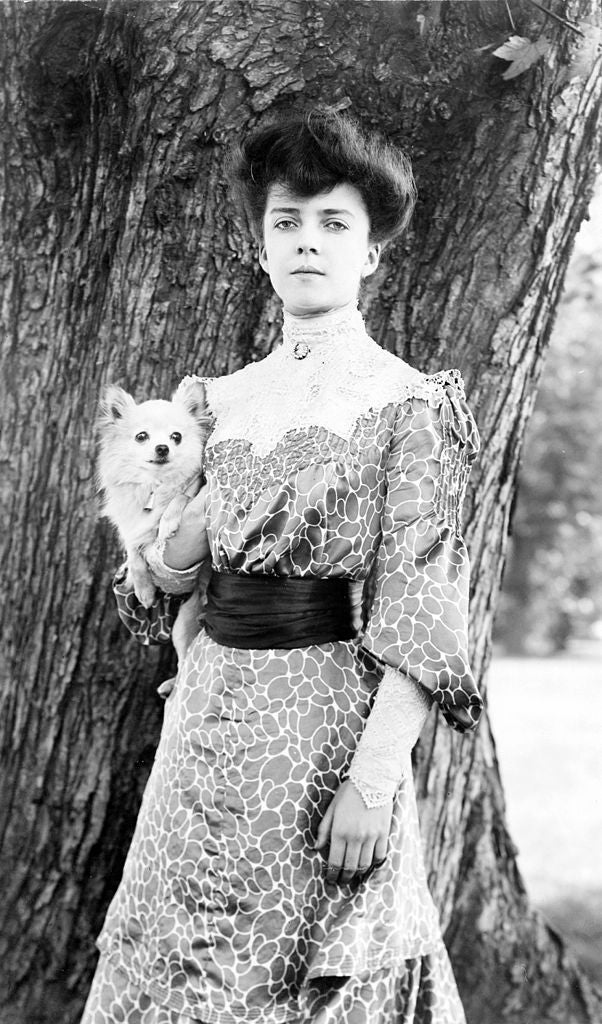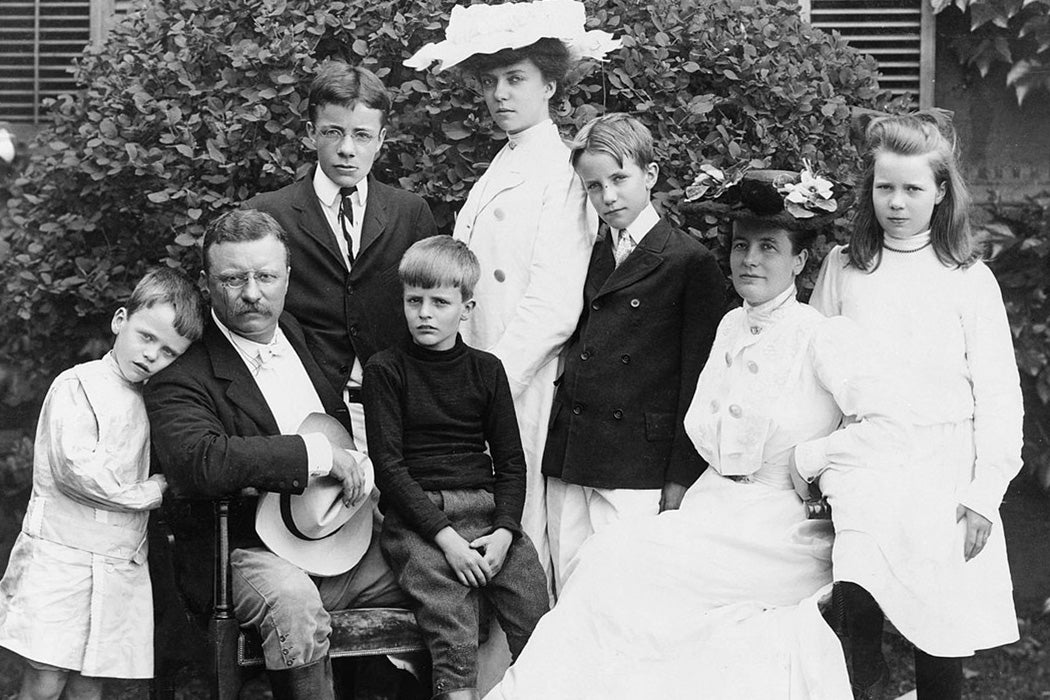In 2017, it seems, no one can escape criticism online—even Barron Trump, the 11-year-old first child who was recently attacked for wearing a T-shirt and shorts on a trip. And his most high-profile defender wasn’t a Republican. It was Chelsea Clinton, who went online to send her sympathy as a fellow first child.
First kids weren’t always considered symbols. As Stacy A. Rosek notes, it was Alice Roosevelt who set the tone for a more public first kid and laid the foundation for post-White-House activism like Clinton’s. Theodore Roosevelt’s oldest daughter was 17 when her father moved into the White House, and she came into fame just as celebrity was becoming a thing at the end of the nineteenth century. Driven by new mass media and a middle-class hunger for celebrity gossip, the celebrity phenomenon focused on high society.
But Roosevelt’s status as a president’s daughter was even higher than that. According to Rosek, “the papers accorded her the unusual respect reserved for royalty.”

Rosek lays out the bizarre childhood that formed Alice Roosevelt—including a family rule that her dead mother never be mentioned to her. Stepsister to the rest of Roosevelt’s children, she rebelled. And her father (though arguably one of the biggest celebrities of his day) complained about the publicity the papers lavished on his daughter as she became more and more public.
Perhaps her celebrity nickname—“Princess Alice”—was what rankled the president. Known for her keen grasp of social protocol and her brushes with both royals and society’s most famous players, she acted as a kind of goodwill ambassador at home and abroad.
But, writes Rosek, there was a catch: Her eccentricities. Roosevelt had her own car; she bet on races; she had a pet snake; she went out in public alone. She even “danced a midnight hoochie-coochie on the Vanderbilts’ roof.” And so her father sent her away, hoping that a tour of the Far East with Secretary of War William Taft would calm his daughter.
Princess Alice—now known merely as “Her” in headlines—carried what Rosek calls a “potent passport.” Teddy Roosevelt capitalized on her energy and her celebrity even as he struggled with what he saw as her irresponsibility. “I can be president of the United States, or I can attend to Alice,” he supposedly moaned.
Roosevelt’s biggest coup was her celebrity wedding at the White House, one of the most prominent social events of its day. She went on to become an outspoken writer and political activist.
Her insistence on having her own life in the face of scrutiny and celebrity allowed future first kids (like the Bush sisters) the freedom to express their own views and go on to embrace public lives of their choosing. The celebrity image she forged was entirely her own—and it’s proof that first kids are important in their own right.







